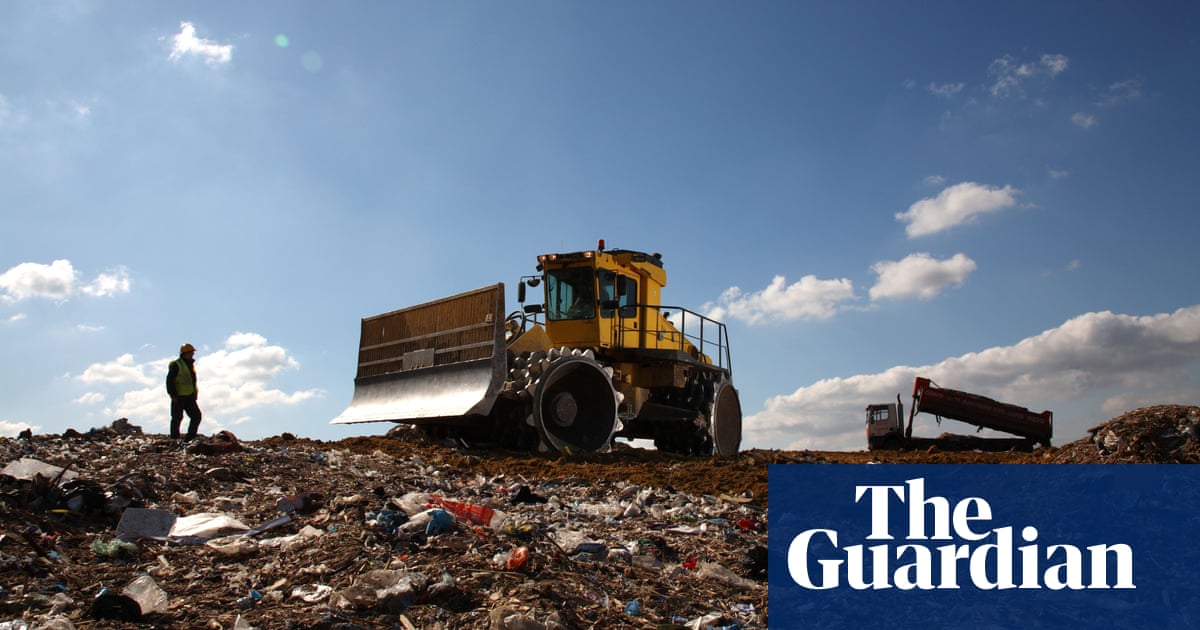More than 100 old landfills in England that may be contaminated with toxic substances have flooded since 2000, potentially posing a serious safety risk, it can be revealed.
Some of these former dumps containing possibly hazardous materials sit directly next to public parks and housing estates with hundreds of households, the analysis by the Greenpeace-funded journalism website Unearthed , in partnership with the Guardian, found.
Although councils are supposed to keep track of the dangers of these sites, funding has long since disappeared and some local authorities had no idea they were responsible, the investigation found.
David Megson, an environmental chemist fromManchester Metropolitan University, said most former landfill sites were “likely to be quite safe and contain relatively inert waste, but some could be quite sinister”.
“Historic reporting of what went into these sites wasn’t great, so in many cases, you’ve got little idea what is in there until you dig into it,” he said.
The investigation took data on the 20,000 former landfill sites in England to identify the most high-risk – those used to dump “special” or industrial waste, for example, which were used after 1945 and before the mid-1990s, when laws about keeping records on the contents of landfill sites came into place.
This was then compared withEnvironment Agencyflooding data, with help from Dr Paul Brindley, a mapping expert at the University of Sheffield, to find landfills where more than 50% of their surface area was flooded.
Any dumps that only contained household waste, those known to be safe or where controls were already in place were removed from the data, leaving only those that may contain dangerous substances, including pharmaceuticals, “forever chemicals”, heavy metals or “liquid sludge” – which could beanything from sewage to cyanide waste.
A total of 105 sites were identified, which were disproportionately situated in poorer areas and in the north of England.
Prof Kate Spencer, a historic landfill expert from Queen Mary University of London, who helped with the investigation, said that in hundreds of years of dumping waste humans had “never really considered the consequences”.
“We now know far more about the potentially harmful effects of the waste materials and pollutants we’ve dumped, particularly chemicals like Pfas and PCBs, and how the impacts of climate change, such as flooding, could reopen pathways for those pollutants to enter the environment.”
The investigation also found that 2,600 former dump sites with potentially hazardous contents were within 50 metres of watercourses.
Charles Watson, the chair and founder of campaign group River Action said: “Everywhere you look, polluters can find easily accessible loopholes in the enforcement regime to break the law and degrade the environment. However, the failure to provide adequate funding to regulate something as basic as landfill sites that could be leaching highly hazardous waste is all the more shocking.
“If our regulators can’t sort out how to protect us from pollutants that in theory have already been ‘safely’ disposed of, then we have little hope of ever seeing a holistic approach to combating the wider sources of water pollution.”
Until 2017, councils could apply for contaminated land capital grants, which were administered by the Department for Environment, Food and Rural Affairs, to remediate contaminated land. Since then, there has been an “erosion of funding”, said Dr Grant Richardson, an environmental consultant and expert on landfill and contaminated land.
“If there’s no obvious risk of harm or pollution emanating from these sites, nothing will be done to investigate or remediate them unless sites come to be developed. That means there are likely hundreds or potentially thousands of sites that have not been properly investigated that could be leaching contaminants at harmful levels into the environment,” he said.
The lack of funding in areas such as this could have “devastating consequences”, the Local Government Association warned, pointing to a wider funding gap for councils of up to £8bn by 2028-29. A spokesperson said local authorities “desperately need a significant and sustained increase” in budgets to keep up with demands placed on them.
The Green peerNatalie Bennett, whose party supports a law requiring better records of sites so they are not a public danger, said: “The lack of adequate regulations on contaminated land poses a threat to human life and welfare, especially given climate breakdown, rising sea levels, increased rainfall and flooding.
“Greens urge Labour to add this law to the statute books and provide the necessary funds for local authorities to meet the requirements of such a new law.”
The Environment Agency said it would “continue to support” local authorities with their responsibility for dealing with former landfills. “In circumstances where the Environment Agency leads on remediation, we work tirelessly with partners to reduce unacceptable risks to human health and the environment,” it added.
